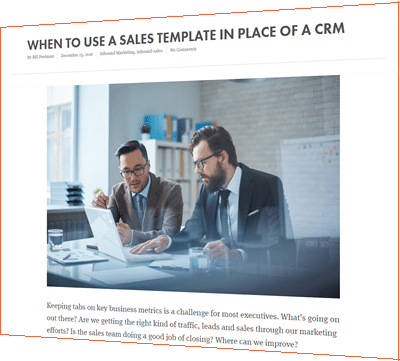 We’ve been immersed in developing buyer personas lately. In fact, we have developed 6 personas in the last couple of weeks — 1 new one for us, 2 for a new client and 3 for an existing client with a new market. These clients have had a lot of questions about personas — Why do we need them? How do we create them? Wow, do they need to be that detailed?
We’ve been immersed in developing buyer personas lately. In fact, we have developed 6 personas in the last couple of weeks — 1 new one for us, 2 for a new client and 3 for an existing client with a new market. These clients have had a lot of questions about personas — Why do we need them? How do we create them? Wow, do they need to be that detailed?
It made me think that it’s a good time to review the whys and wherefores of buyer personas. Over the next few weeks we will run a series of posts on one of the most important tools in your marketing kit. Today, we’ll give you a brief introduction to personas. This information is taken from our Buyer Persona eBook, which is a part of our Buyer Persona Toolkit. You can get the complete Toolkit at the end of this post.
Just What Is a Buyer Persona?
Have you ever looked at an ad and said, “I don’t get it, why would I want that?” Or conversely, seen one that felt like it was made just for you? In the first case, either you weren’t part of that product’s target market, or worse, they didn’t understand how to market to you. In the second case, they “got” you and had developed their message to speak directly to you and others like you.
Many of us Americans are bombarded with more than 2000 marketing messages a day. To break through the noise, reach your potential customers, and keep them engaged with you, your marketing message needs to be targeted, precise, and relevant. Buyer personas are an essential tool to give you the information you need to do just that.
A buyer persona is a fictional character that represents your ideal prospect. It is an archetype, not a customer profile, although it usually contains some demographic information like a profile does. But more importantly, it is an in-depth composite of the characteristics, behaviors, and motivations of your ideal customer. When complete, it will help you understand the motivating beliefs, fears and secret desires that influence your customers’ buying decisions.
Why Do I Need One?
You might say, “Why do I need buyer personas? It takes quite a bit of time to develop them and it’s not the easiest task in the world. Wouldn’t it be better to jump into inbound marketing and start getting those leads I’ve heard about?”
Well, you could do that. Lots of companies do. The question is how successful you can be with a seat-of-the-pants approach. The most effective marketers focus their message on the prospect, not on their own product or service. If you don’t know who your target is, and what their problems, frustrations and needs are, how can you expect to even attract them with what you offer, much less offer them the right solution to make the sale?
Developing buyer personas is not an academic exercise. It is an integral part of successful inbound marketing. Your buyer persona will help you to fine-tune your marketing efforts and understand why some products/services sell better than others.
It can expose important gaps or conflicts in your marketing messages. Using personas informs the kind of content you need to create to get the right type of traffic, leads and customers, by focusing your message on the prospect. This one exercise can lead to a dramatic transformation in your business.
Next week we’ll discuss what to consider in developing your personas – how many personas should you have and what information will you need to compile to complete them.





